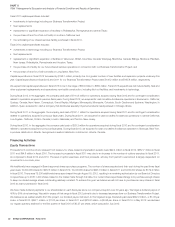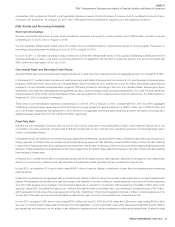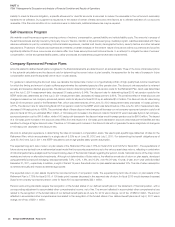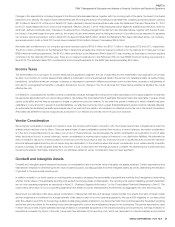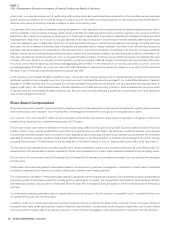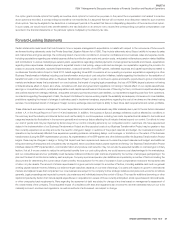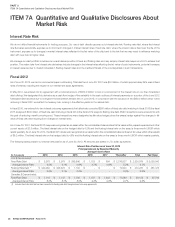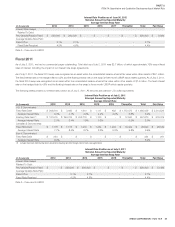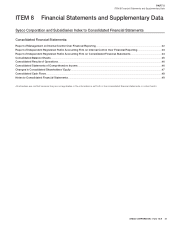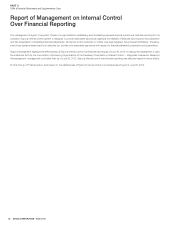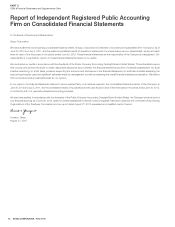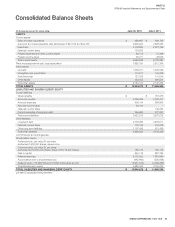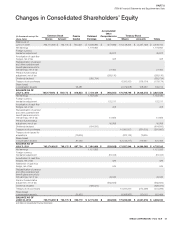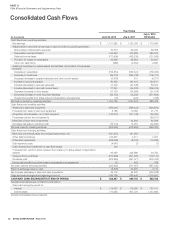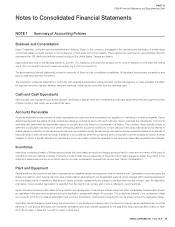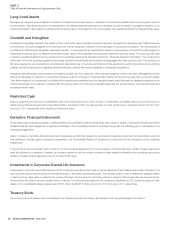Sysco 2012 Annual Report Download - page 63
Download and view the complete annual report
Please find page 63 of the 2012 Sysco annual report below. You can navigate through the pages in the report by either clicking on the pages listed below, or by using the keyword search tool below to find specific information within the annual report.
SYSCO CORPORATION-Form10-K40
PARTII
ITEM7AQuantitative and Qualitative Disclosures About Market Risk
Foreign Currency Exchange Rate Risk
The majority of our foreign subsidiaries use their local currency as their functional currency. To the extent that business transactions are not denominated in
a foreign subsidiary’s functional currency, we are exposed to foreign currency exchange rate risk. We will also incur gains and losses within our shareholders’
equity due to the translation of our fi nancial statements from foreign currencies into U.S. dollars. Our income statement trends may be impacted by the
translation of the income statements of our foreign subsidiaries into U.S. dollars. The changes in the exchange rates used to translate our foreign sales into
U.S. dollars did not have a signifi cant impact on sales when compared to fi scal 2011 and positively impacted sales by 0.5% in fi scal 2011 compared to
fi scal 2010. The impact to our operating income, net earnings and earnings per share was not material in fi scal 2012 and fi scal 2011. A 10% unfavorable
change in the fi scal 2012 weighted year-to-date exchange rate and the resulting impact on our fi nancial statements would have negatively impacted fi scal
2012 sales by 1.2% and would not have materially impacted our operating income, net earnings and earnings per share. We do not routinely enter into
material agreements to hedge foreign currency exchange rate risks.
Fuel Price Risk
Due to the nature of our distribution business, we are exposed to potential volatility in fuel prices. The price and availability of diesel fuel fl uctuates due
to changes in production, seasonality and other market factors generally outside of our control. Increased fuel costs may have a negative impact on our
results of operations in three areas. First, the high cost of fuel can negatively impact consumer confi dence and discretionary spending and thus reduce the
frequency and amount spent by consumers for food-away-from-home purchases. Second, the high cost of fuel can increase the price we pay for product
purchases and we may not be able to pass these costs fully to our customers. Third, increased fuel costs impact the costs we incur to deliver product to
our customers. During fi scal 2012,2011 and 2010, fuel costs related to outbound deliveries represented approximately 0.7%, 0.6% and 0.6% of sales,
respectively. Fuel costs, excluding any amounts recovered through fuel surcharges, incurred by Sysco increased by approximately $39.8million in fi scal
2012 from fi scal 2011 and by $33.0million in fi scal 2011 over fi scal 2010.
We routinely enter into forward purchase commitments for a portion of our projected monthly diesel fuel requirements. As of June30,2012, we had
forward diesel fuel commitments totaling approximately $96million through April2013. Subsequent to June30,2012, we entered into forward diesel fuel
commitments totaling approximately $20million for Mayand June2012. These contracts will lock in the price of approximately 35% to 45% of our fuel
purchase needs for the contracted periods at prices higher than the current market price for diesel.
Assuming that fuel prices do not rise signifi cantly over recent levels during fi scal 2013, fuel costs exclusive of any amounts recovered through fuel surcharges,
are not expected to fl uctuate signifi cantly as compared to fi scal 2012. Our estimate is based upon current, published quarterly market price projections
for diesel, the cost committed to in our forward fuel purchase agreements currently in place for fi scal 2013 and estimates of fuel consumption. Actual fuel
costs could vary from our estimates if any of these assumptions change, in particular if future fuel prices vary signifi cantly from our current estimates. A
10% unfavorable change in diesel prices from the market price used in our estimates above would result in a potential increase to $10million to $20million.
Investment Risk
Our company-sponsored qualifi ed pension plan (Retirement Plan) holds investments in both equity and fi xed income securities. The amount of our annual
contribution to the plan is dependent upon, among other things, the return on the plan’s assets and discount rates used to calculate the plan’s liability.
Fluctuations in asset values can cause the amount of our anticipated future contributions to the plan to increase and pension expense to increase and
can result in a reduction to shareholders’ equity on our balance sheet as of fi scal year-end, which is when this plan’s funded status is measured. Also,
the projected liability of the plan will be impacted by the fl uctuations of interest rates on high quality bonds in the public markets. Specifi cally, decreases
in these interest rates may have a material impact on our results of operations. To the extent the fi nancial markets experience declines, our anticipated
future contributions, pension expense and funded status will be affected for future years. A 10% unfavorable change in the value of the investments held
by our company-sponsored Retirement Plan at the plan’s fi scal year end (December31,2011) would not have a material impact on our anticipated future
contributions for fi scal 2013; however, this unfavorable change would increase our pension expense for fi scal 2013 by $33.0million and would reduce our
shareholders’ equity on our balance sheet as of June30,2012 by $137.7million.


